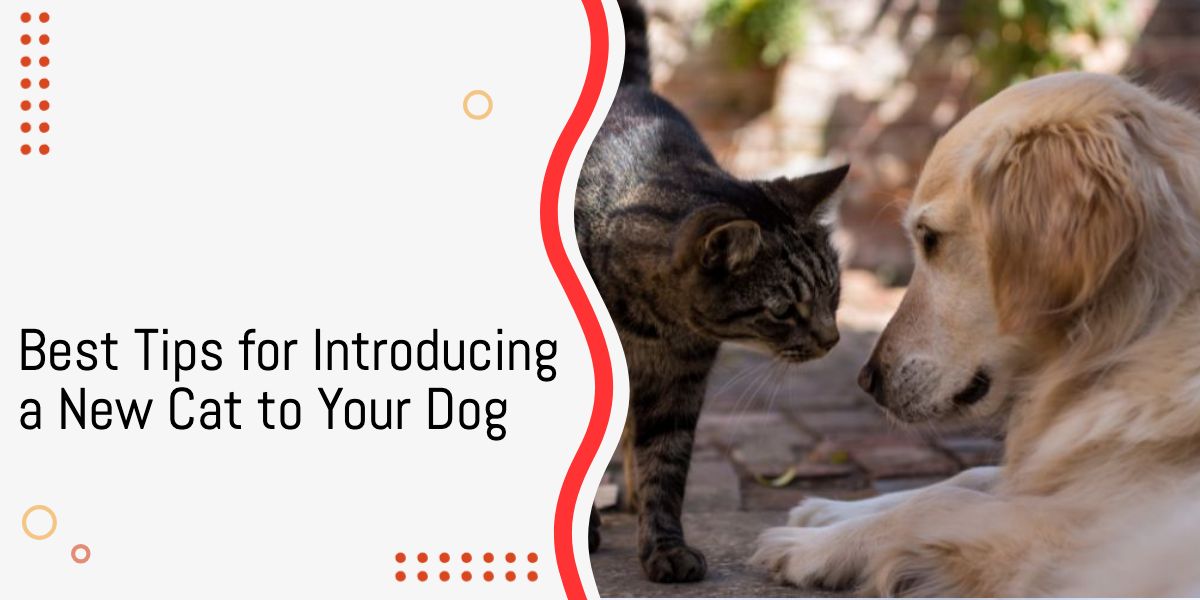Yes, cats and dogs can share a loving relationship while living in the same household. Yet, it all starts with proper training.
Naturally, dogs are considered predators and will view cats as prey. Although training can help these two live peacefully, some dog breeds won’t welcome a cat in their territory and can get too aggressive.
So, if you want to create a multi-pet household, this article is for you.
Table of Contents
Tips for Introducing a New Cat to Your Dog Successfully
Before introducing a new cat to your dog, have realistic expectations. Introducing a cat to a puppy will be easier than introducing it to an adult dog. Early socialization teaches your pup that a cat is a friend, not prey.
Some dog breeds, like American pit bull terriers, greyhounds, and Weimaraners, are fast hunters with strong prey drive, so they can chase and even harm your kitty.
Some breeds won’t physically harm your cat, but the continuous chasing can make it too stressed.
These tips can make your household a safe home for both animals. Remember that this process can take several weeks, so you might need to take some time off or ask a friend to keep an eye on your pets.
1. Prepare Your Space
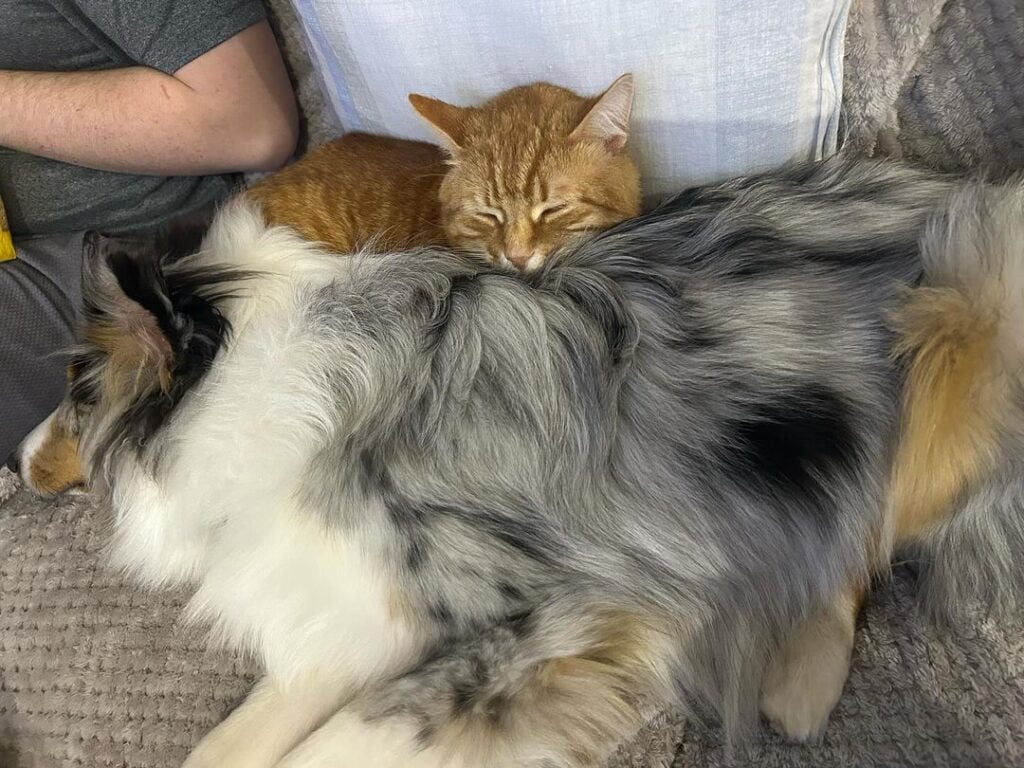
While planning to introduce a new kitty to your dog, you should make sure that each one of them has their own space. They should have everything they need when separated.
This might be too confining for a dog that is used to roam freely around the house. So, make sure you pick a comfortable crate and fill it with entertaining toys so your dog doesn’t get too stressed.
Prepare a dog-free sanctuary that your cat can access even after you’ve successfully introduced both animals to one another. Make sure there are shelves, cat trees, and other high spots your cat can jump on whenever needed.
2. Keep them Separate
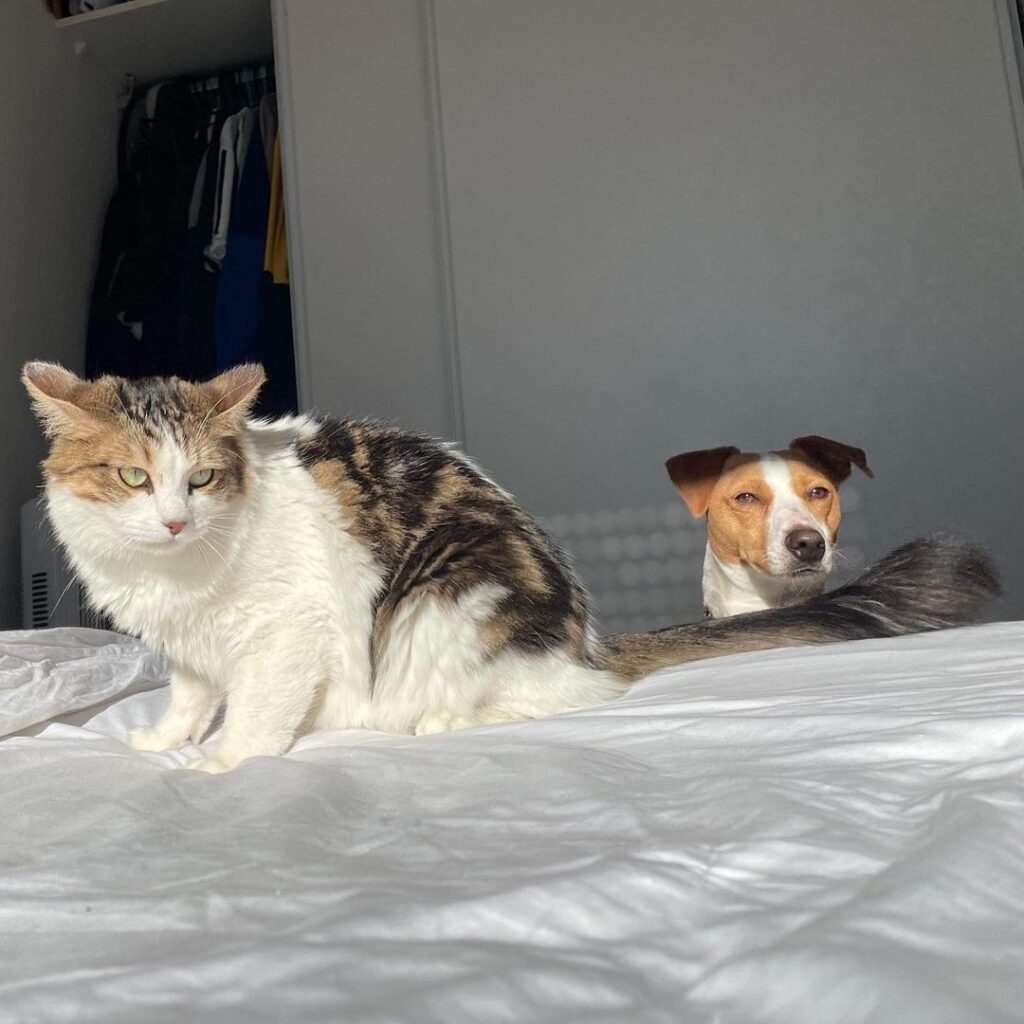
Don’t rush introducing your kitten or adult cat to your resident dog. This can be too stressful for both animals if you don’t give them time to get used to the new setup.
Take your cat to the vet to ensure it’s free of all diseases it might transmit to your dog. Keep your cat in a separate room with food, water, and a litter box. This should be its safe space.
Your dog will still be able to feel and smell the cat, but it won’t get too alert or anxious. You can also add some tunnels and caves to keep your cat safe.
Related: 12 Cat and Dog Best Friend Photos
3. Introduce Your Cat and Dog Gradually
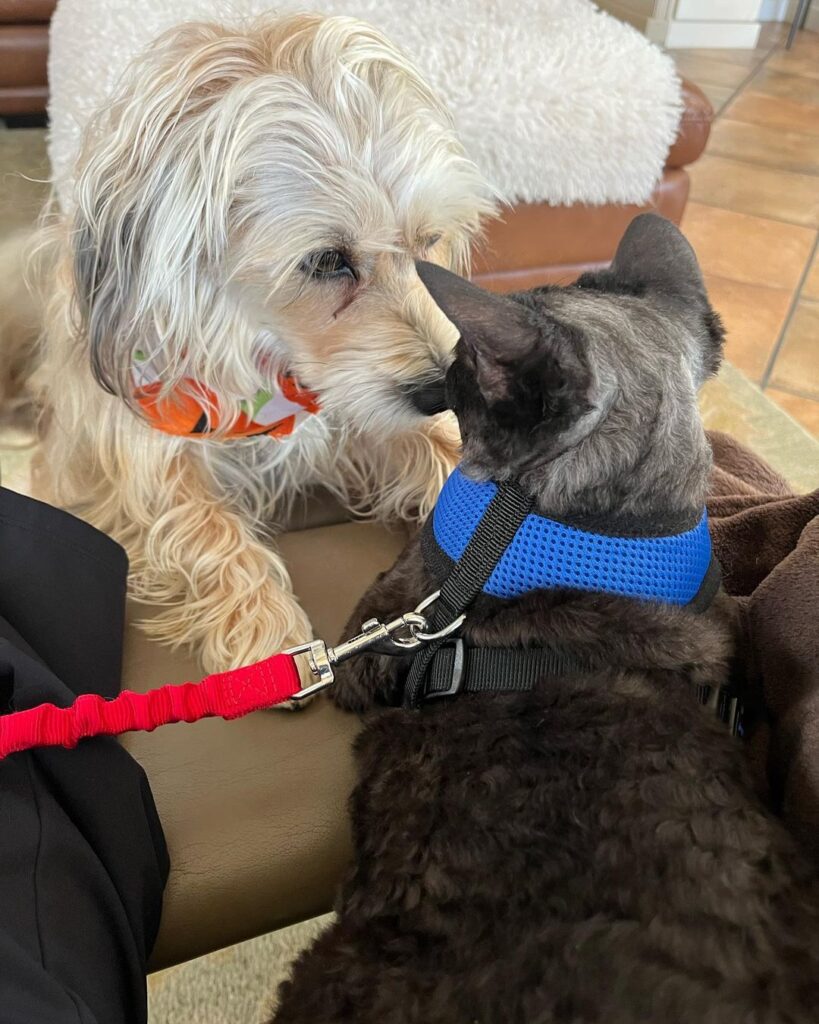
Animals are too sensitive, so you can feed both your cat and dog on opposite sides of a door. This will help them get accustomed to the presence of one another without being too triggered. However, you shouldn’t put the food too close to the door, or they might not eat.
After a while, bring the food plates closer to the door. With time, you’ll realize that your pets are getting used to each other’s presence.
Next, you can open the door and let them see each other but don’t let them get too close. Keep the dog on a leash for extra safety.
4. Pay Attention to their Body Language
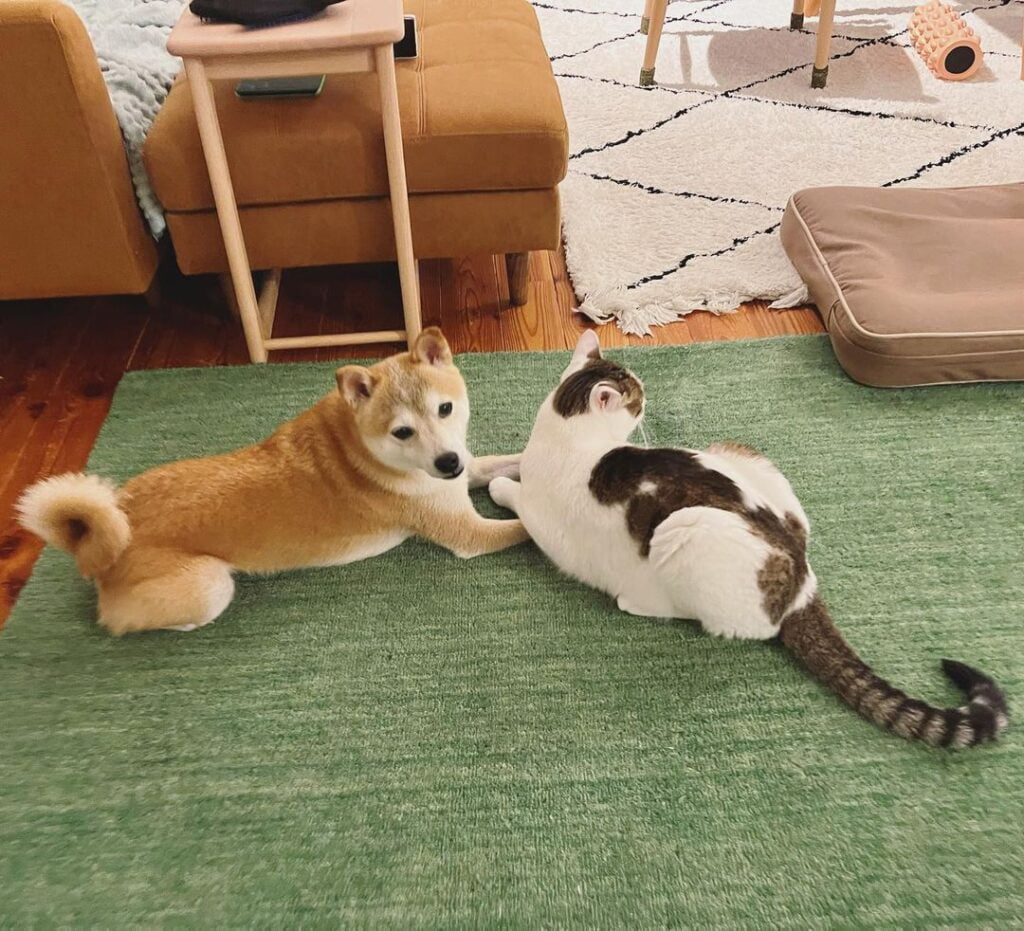
Signs of discomfort your cat and dog show indicate you’re moving too fast. This is why it’s crucial to pay attention to the body language of both animals.
For example, if your dog has its eyes fixated on the cat, this might show that it considers it as prey. Ideally, your dog will be intrigued by the cat’s presence, but it shouldn’t bark excessively or try to attack it.
5. Start Face-to-Face Interactions
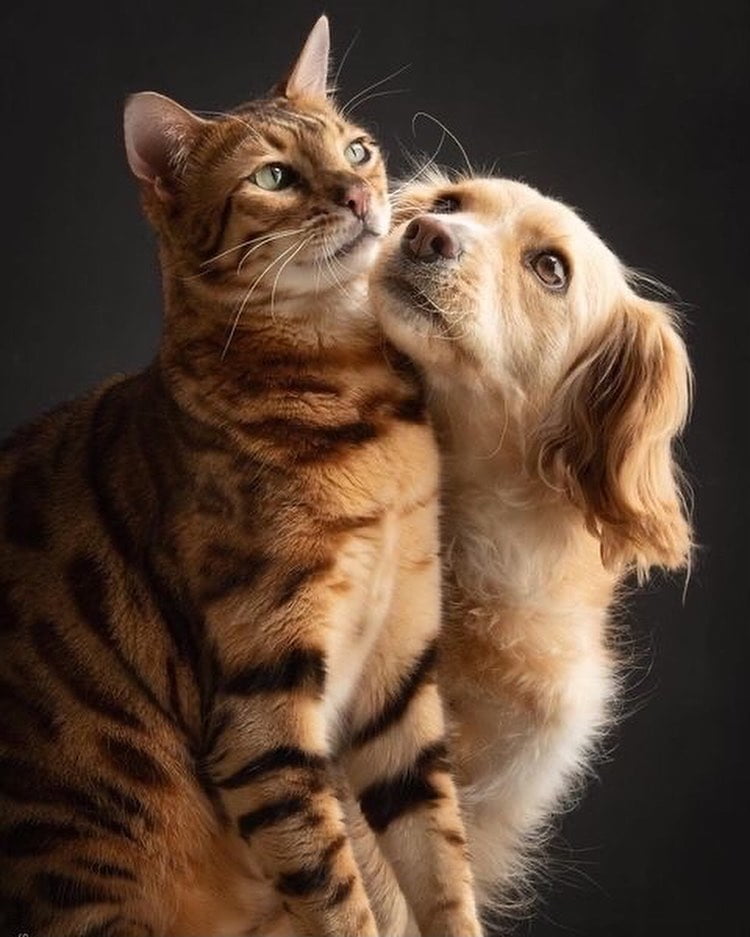
When you notice that your cat isn’t hissing, raising its tail, or arching its back, you know it doesn’t feel threatened by the dog. At the same time, you’ll notice that your dog doesn’t feel irritated by the cat and won’t bark or jump.
Ask your dog to sit, and the cat will naturally approach it. Most cats aren’t considered a threat by dogs, but some can be aggressive or offensive.
If your dog is uncomfortable, you can try to get it accustomed to the cat for several days before this close encounter.
6. Use Treats for Distraction
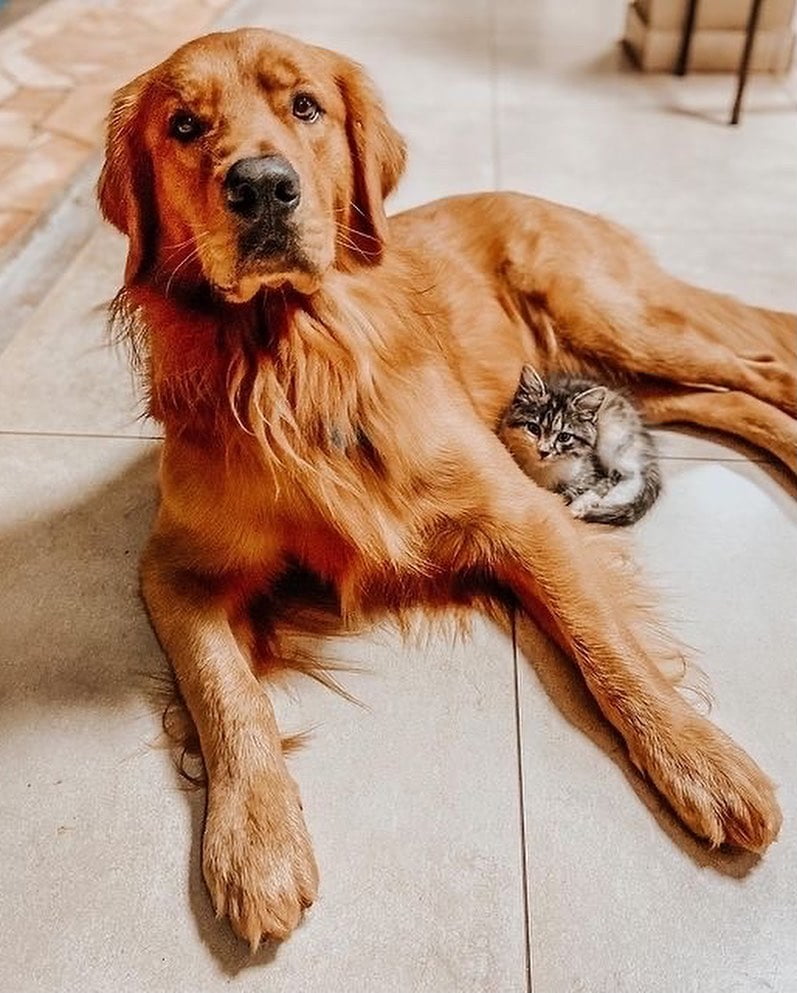
Some dogs will become too uncomfortable with the cat’s presence. If you’re unsure that your dog can accept the kitty, you can use treats as a distraction.
Play a game called Look At That with your pup, where you let it look at the cat while it’s on a leash, then grab its attention with a treat that you hold close to its face. Repeating this activity several times will make your dog realize it’s more rewarding to ignore the cat.
Related: Do Cats Get More Affectionate With Age?
7. Test Your Dog
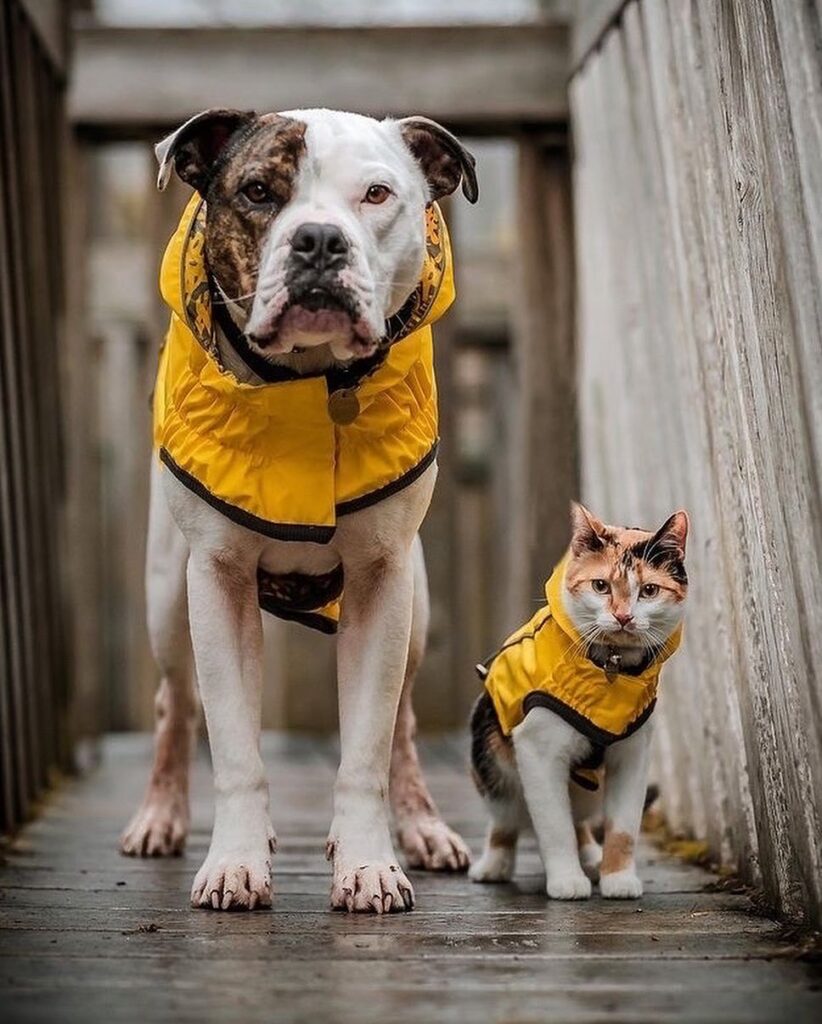
Although you want your cat and dog to become friends as soon as possible, you should give them enough time and space. Some dogs will be OK when they’re five feet away from your cat; others need more distance.
If you notice that your dog moves slowly and its body stiffens, then you’re too close. The goal is to help your pup feel relaxed.
8. Use Markers

Use verbal cues to help your dog understand that it’s doing well. If it’s calm while looking at the cat and then looks back at you, say “Yes” while offering it a treat. This positive association will encourage it to stay calmer.
9. Move Closer
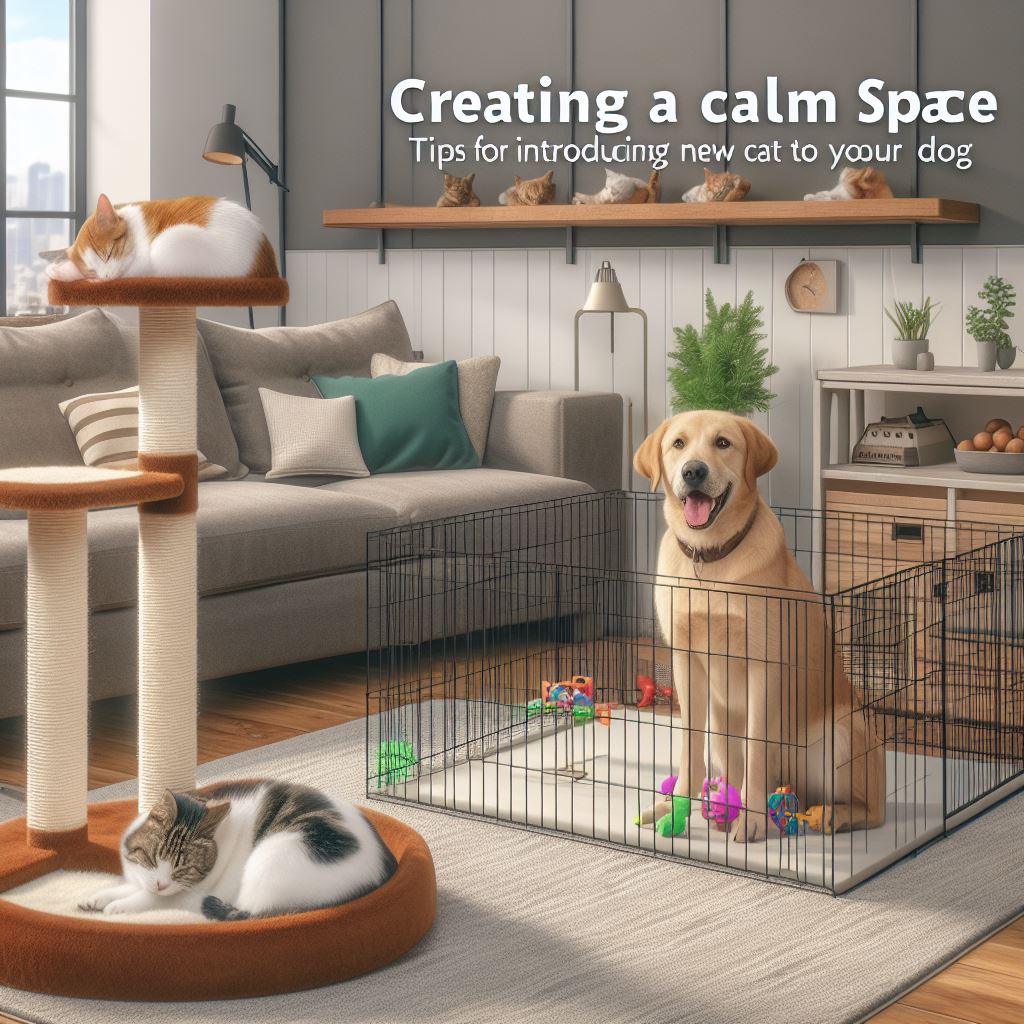
Source: https://ibb.co/Brq2kGT
You’ll notice that your dog can remain calm and quiet while facing your cat. This is your sign to bring them closer while keeping your pup on a leash. Keep using treats for distraction until your cat and dog can be beside each other with no issues.
10. Revise Your Steps
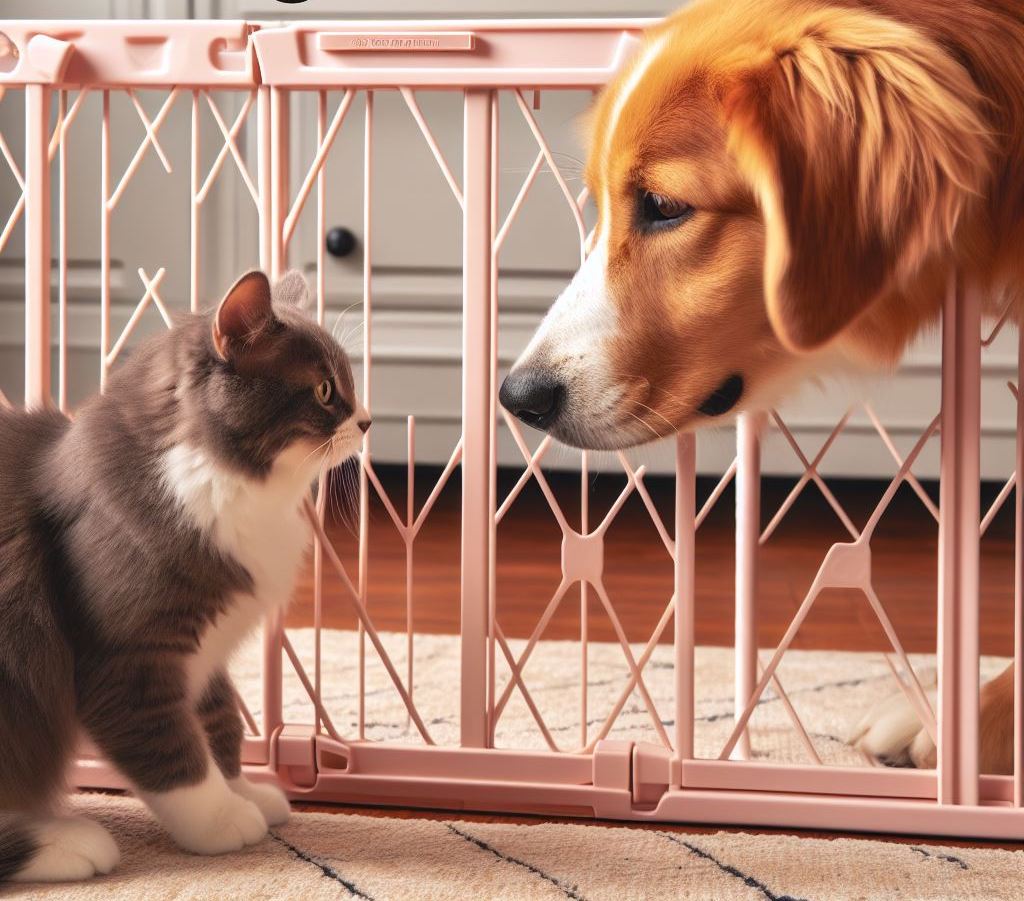
After achieving some progress, you might notice that your dog is feeling too triggered. This means that you were moving too fast, and your pup needs more time and space. Every dog learns at a different pace, so give your pet time.
11. Stay Focused
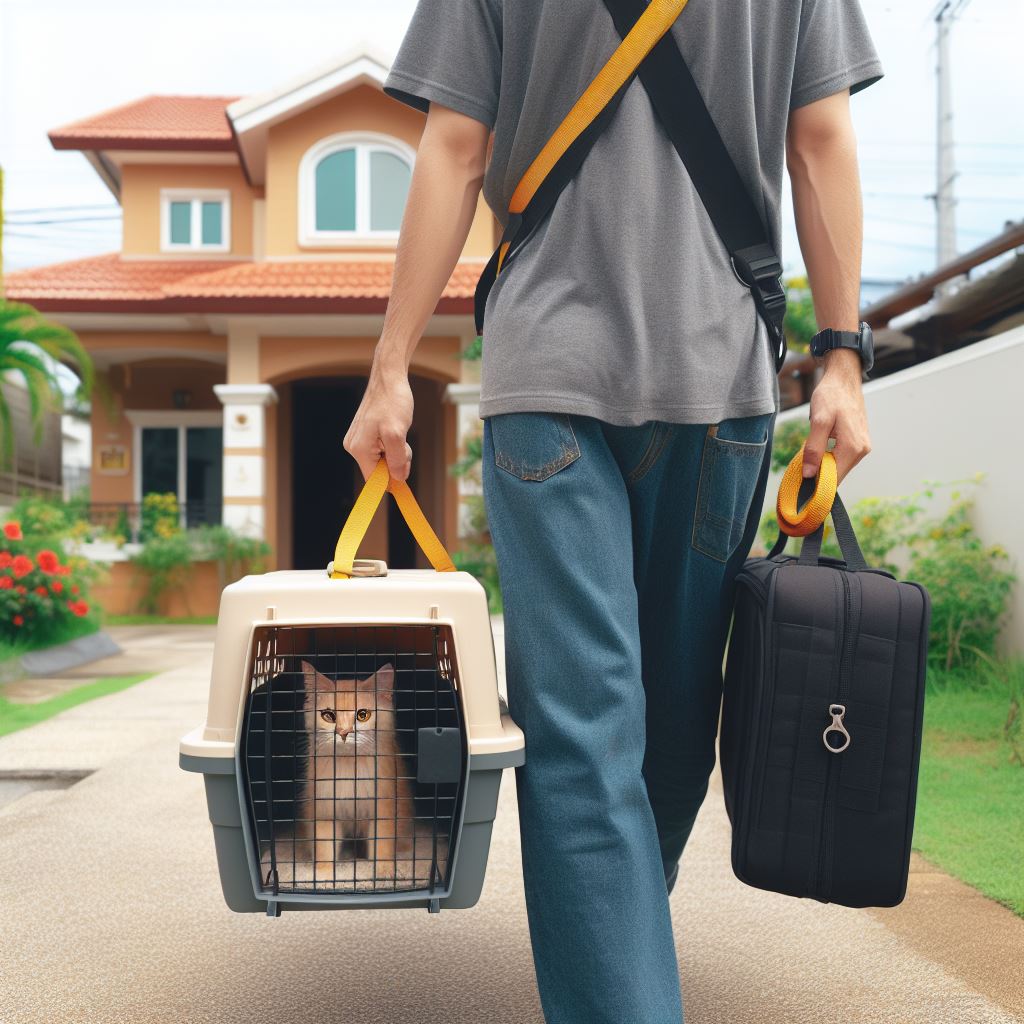
Once your dog and cat are comfortable, you might start moving the leash and let your cat explore around your pup. If you’ve been training it properly, it won’t show any sign of aggression.
Yet, it’s crucial to supervise all direct interactions between your two pets for some time. Keep rewarding your dog for following all your orders, and give it treats whenever it behaves well.
Avoid punishing your pup whenever your cat is around, or it might become too aggressive towards it.
Final Thoughts
The earlier you start introducing your new cat to a dog, the easier the process will be. Yet, with practice and patience, adult pets can also get along together.
Different cats and dogs behave in various ways. Some animals will be more tolerant of the presence of other pets. Keep an eye on your pets’ body language and give them time and space to get used to each other’s presence.

